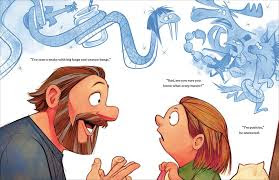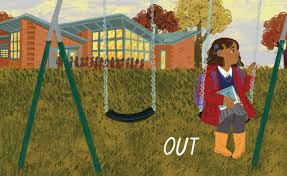"Our Kitchen
Smells of mornings,
blueberry muffins,
hot chocolate, tea.
It smells of bacon
and of eggs.
It smells of family."
It's hard to imagine that Jane Yolen has written 'well over four hundred books'! I have read many, and some have been favorites for years. Her bibliography is obviously very long; it is also varied. I have cried through some, laughed through others, and feel lucky to have had so many to relish.
This new collection of short poems is mostly new. Any that have been published prior to now have a notation made on the poem's page. The topics are diverse: home, school, seasons, the calendar, sports, nature, and animals. As with all books of poetry, some will be chosen as favorites and others, perhaps, not so meaningful to each reader. She writes about perspective, both inside and out of the subjects chosen.
The language is pleasing to the ear, and offers a conversational tone for many of the entries. Each new section begins with suggestions for writing poetry: the why, how, when, where, the poem in your heart, if there is no poem today, and who can write a poem.
"Who Can Write a Poem
Anyone with a brain who can scan
can.
Anyone who can look at the sky.
Anyone who can watch a squirrel
crossing the road,
or imagine the scene, should try.
Anyone hearing a song in the heart,
or rhymes that are sharp as a knife ...
And if you imagine a poem in your pocket,
it's there for the rest of your life."
There is a lot to savor in the more than one hundred poems included in this collection. As readers move from page to page, section to section, in to out, it will be of interest to see the poems they choose as favorites. The book ends with a thank you from the poet to readers for taking the time to read the poetry she has penned for enjoyment and careful thought. There are poems to read alone, or out loud, or even with friends. They remind us to look around and see what is happening in life, and then to write about it. As she writes about everything, she encourages those reading to try to do the same. Learn about the world, and then write what is seen and understood from those observations. There's good and there's bad; everything is there to be considered, and even connected.
How about this one to get started?
"In My Locker
...
Inside they'll find
one
holey
sock,
the insides of
a broken clock,
a bag of feathers,
three brown stones,
a hanger
with three old pine cones,
my last year's notebook,
tons of tests,
all marked in red,
a blue jay's nest,
a note from
Mary Ellen White,
my retainer that feels
much too tight ... "
There! Ms. Yolen got you started. It's up to you what you do next ... your backpack, your closet, your bedroom, your own school locker, your sports bag? You get to choose and see what you see when you take a close look.






















































